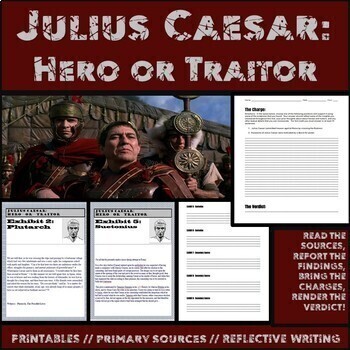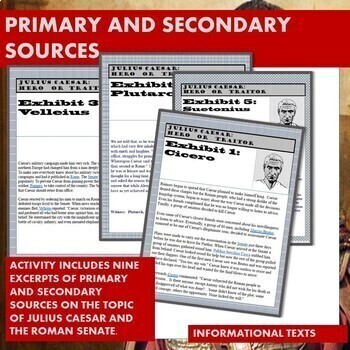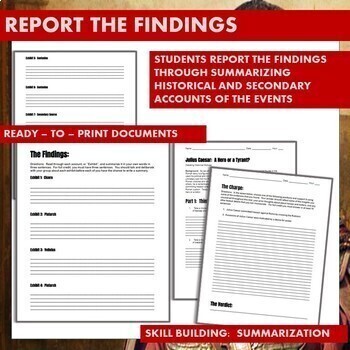Julius Caesar: Hero or Tyrant Primary Source and Analysis Activity
- PDF
What educators are saying
Description
Students put their CSI skills to work as they consider the character qualities of heroes and traitors, read through primary and secondary accounts, and write about historical events before rendering a verdict in the case of Caesar vs. the Roman Senate.
To some Julius Caesar is a hero who acted as needed to defy the corrupt Roman Senate and make life better for the Roman people. To others, Caesar was a man of selfish ambition and a threat to the Roman order. In this activity: students will decide.
This activity includes:
Teacher best practice tips
Reflecting about Heroes and Traitors sheet
6 - Excerpts from primary sources such as Plutarch, Suetonius, Cicero and more
3 - Secondary sources
Research and Analysis log to report their findings.
Reflection Portion
Get my entire World History Curriculum for just $30!! The Best Value on the Web - Hands Down!!
World History Complete Curriculum (450 pages / 140 + Activities / 14 Units)





